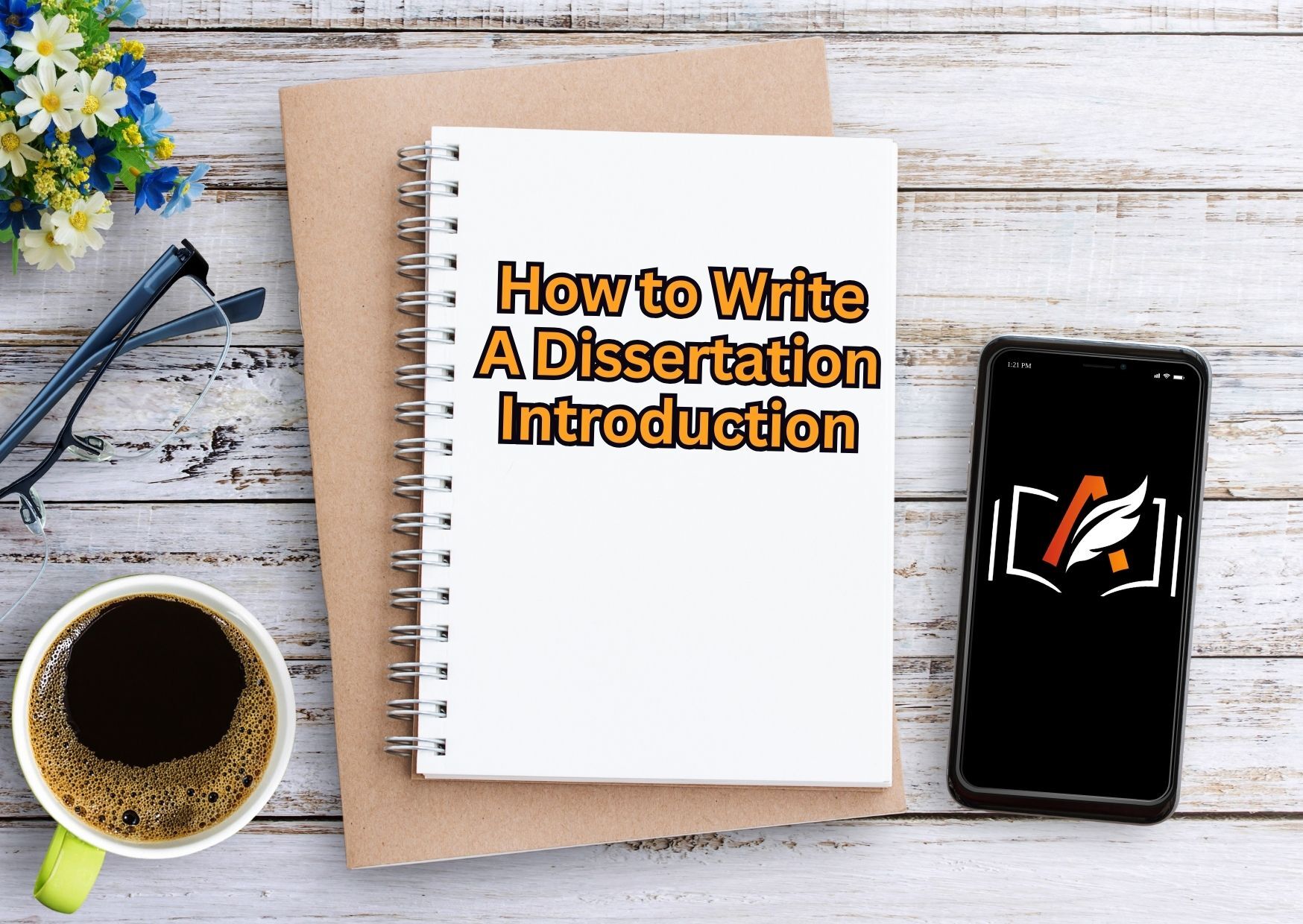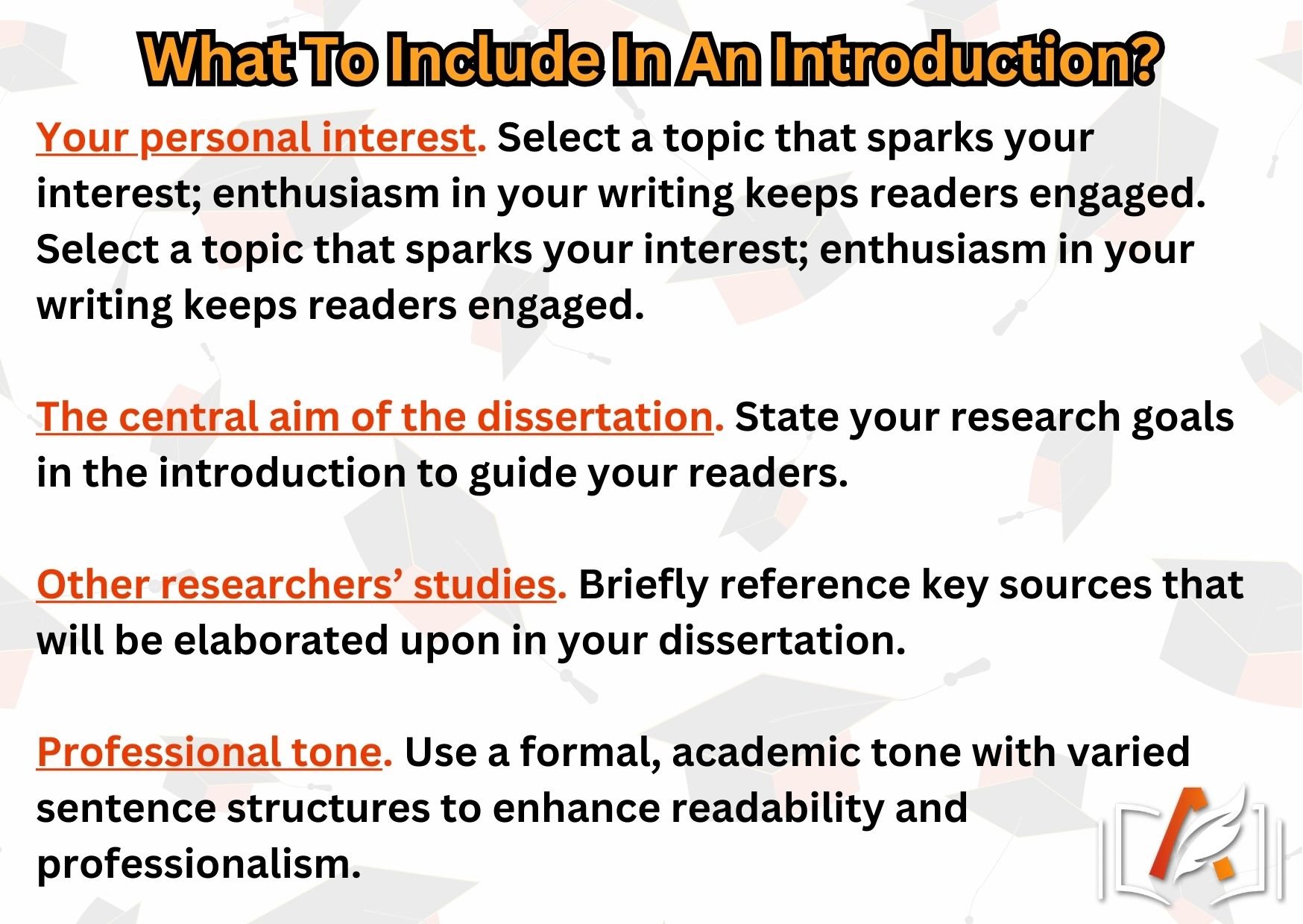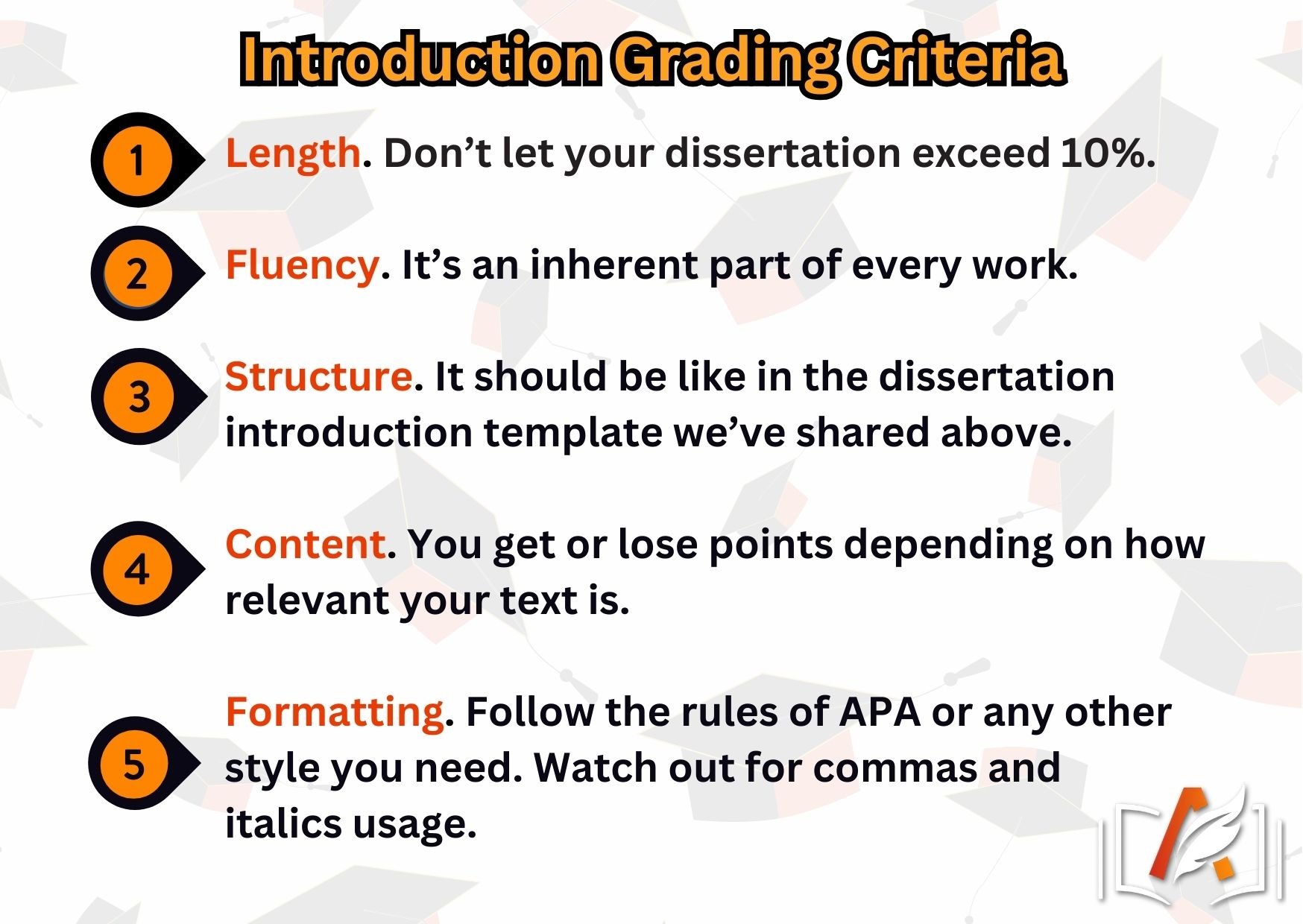 Ruby Butz
Ruby Butz

Most students start to wonder how to write a dissertation introduction after choosing their project topics. Now, they are sitting in front of their laptop, staring at the blank Word page and pondering where to begin. A dissertation is a lengthy, challenging work that determines how well you understand your subject, what original ideas you can contribute to it, and whether you deserve your degree. To succeed, students must face months of extensive research and brainstorming. Ironically, writing your first words is often the hardest part.
If you’ve been worrying about starting your dissertation, you’ve found the right guide. StateOfWriting team comprises talented experts who have written numerous powerful dissertations. They collaborated to create an academic guide featuring facts, insights, tips, and examples that will help you understand how to write introduction for dissertation. As Maya Angelou wisely said, "Do the best you can until you know better. Then when you know better, do better." This guide is designed to help you learn more so that you can truly prepare your dissertation better. Examine it and say goodbye to your questions!
Key Suggestions on Writing a Solid Intro for Your Dissertation
What is an introduction? It’s the first section of a work with two major goals. First, it informs readers of what topic you intend to explore: they must feel interested and enlightened, forming a clear idea of what kind of research they’re about to delve into. Its second function is to provide a topic roadmap, showcasing what you’ll be doing to investigate it. Now let’s cover the key components each dissertation introduction should contain.
Dissertation Introduction Structure
Structure is one of the biggest problems with academic writing because most people loathe it. As a student, you’d probably prefer to present your thoughts naturally, giving idea after idea until you think you’ve said everything there was to say. Unfortunately, the education sphere is strict in this regard, especially in Great Britain. All dissertations must have a clearly defined structure; all students must stick to it. Cheer up, though! We will explain everything:
- Hook. What to include in introduction of dissertation first? An interesting sentence. Yes, it’s that simple. This sentence is called a hook because it has a similar purpose to a fish hook: it must reel readers in and catch their attention. When someone reads the first sentence of your introduction, they must feel immediately intrigued. You can achieve this effect by presenting a shocking fact, interesting statistics, or a line that uniquely resonates with people. Give it some thought.
- Context. The next element in our guide on how to write dissertation introduction is background. Give your audience some context on what you’re investigating. Start gradually, leading from general to more specific points. You need to show the context of your key theme, explaining why and how it emerged, its effect, and what can be done about it.
- Scope area. To learn how to write an introduction for a dissertation, you’ll have to see different examples. Once you do, you’ll realise that most of them mention other scholars’ research. That’s what you should include as well. Disclose whether your topic is popular, with many articles and books covering it, or if it’s rare and lacks a substantial body of research. Establish which area or population it affects.
- Overall relevance. Before writing an introduction for a dissertation, students should get dissertation proposal help and get this proposal approved by their professor. If you acquired it already, then you have nothing to worry about. If you were allowed to explore your topic, it must be relevant; now, all you have to do is confirm its relevance again, this time more profoundly. Reveal why researching it is a good idea. Indicate how many implications your study might have and what changes it may lead to. This highlights that a particular topic is not fully explored yet, hence why you chose it for your research.
- Research questions. Another part of the introduction dissertation structure is the leading research questions. At this point, you have formulated your topic and its background. Now you should demonstrate what exactly you’re trying to prove. Present the crucial questions you’ll be seeking to answer.
- Structure overview. This point is closely connected to the previous one. One of the keys to learning how to write a good introduction for a dissertation is being specific. You’ve described your main questions; now explain what each section of your introduction will do to answer them. Consider it a summary that goes through your entire project.
What Should a Dissertation Introduction Include
You’ve understood which elements the introduction consists of. That’s great, but you should know how a professional dissertation writer would approach this task. Every person has a unique vision, so they may spend more time describing some points while nearly omitting the others. Whatever you do, be sure to cover these aspects.
- Your personal interest. Before writing introduction for dissertation, all students decide on their topics. Hopefully, you can choose something you really like. Even if you have mixed thoughts about it, attempt to find something engaging that will allow you to feel at least some passion towards it. You must pour this passion into words, making your tone lively and compelling. If your readers sense your boredom in the disjoined ideas and dry language, they might lose interest in reading further.
- The central aim of the dissertation. What to write in dissertation introduction for certain? Its objectives. Dedicate significant attention to them because you should make it very clear what goals your research is pursuing. Check online examples if you’d like to see how professionals do it. We’ll come back to this little tip later.
- Other researchers’ studies. When writing dissertation introduction, include a couple of references to the major credible sources you’ll be relying on in your research. Don’t perform a literature review here, but present several facts supported by the articles or books you’ve located. This acquaints your audience with the sources they’ll encounter later in the body of your dissertation.
- Professional tone. What should a dissertation introduction include that we haven’t already mentioned? Your overall writing tone. As you probably understand, a dissertation is a serious project that requires a meticulous academic approach. Use more complex words and phrases than you normally do. Utilize synonyms and start your sentences in different ways to avoid repetitions — for example, switch between infinitives, gerunds, and nouns at the start of your lines.

Avoid This When Writing Introductions
You know how to start a dissertation introduction, but you should also learn what you should avoid when writing it. There are many rules. We chose the most relevant ones you should review.
- Direct quotes. Don’t use direct citations in your introduction unless absolutely necessary. This section showcases your ideas. You must present your own thoughts, not rely on someone else’s opinion.
- Topic discussion. Some students ramble in their introduction. Avoid doing the same. Tease your audience with some facts about your topic without giving much away. Introduce, don’t discuss. There’ll be space for it later.
- Informal language. When writing a dissertation introduction, avoid contractions, phrasal verbs, and first-person pronouns. Their usage will damage the validity of your project.
- Conclusion. Never present your study's conclusion in the first section. Even if you have all the numbers and facts, leave them for later sections. Like your readers, you’re supposed to be clueless at this point.
5 Suggestions from Top Dissertation Experts
Our British experts shared advice rooted in their experience with dissertation writing. Hopefully, you’ll find their tips beneficial.
- See online examples. Before writing your dissertation, see how other people did it.
- Write an introduction to dissertation last. Your plans and goals might change after you start performing research, so instead of re-writing your introduction later, create it last.
- Be aware of the size of this section. Typical introductions cannot exceed 10% of the total word count.
- Seek assistance if you feel insecure. If you start thinking, “I’d rather pay someone to write my dissertation instead of doing it myself”, perhaps you should do just that. Don’t rush, though. Order an introduction or any other chapter first, then see how it’ll make you feel. Perhaps, after getting support and seeing an introduction dissertation example, you’ll feel confident again and resume writing your project.
- Edit it at least twice. Re-read your dissertation a day and then preferably a week after writing it. This will give you different perspectives, letting you catch the mistakes your tired eyes might have missed.
Lack of inspiration? Want to Enjoy Free Time?
GRAB YOUR 20% DISCOUNT
Contact StateOfWritingCriteria Judging If You Learned How to Write a Good Dissertation Introduction
If you’ve ever seen the college grading rubric, you probably know how many categories it entails. In Great Britain, professors assess students’ dissertations part by part. The introduction has a separate column, which can either earn you points or make you lose them. Check it out and keep it close when you start your writing process.
- Length. Don’t let your dissertation exceed 10%.
- Fluency. It’s an inherent part of every work.
- Structure. It should be like in the dissertation introduction template we’ve shared above.
- Content. You get or lose points depending on how relevant your text is.
- Formatting. Follow the rules of APA or any other style you need. Watch out for commas and italics usage.

A Well-Written Dissertation Introduction Example
Seeing something once is more impactful than learning theory. We prepared a brief sample of a dissertation introduction on the topic “How Psychopathy Differs Between Children of Different Genders”. Then, we analysed it to underline its strengths.
Introduction Example
Psychopathy remains an understudied disorder with the power to alter people’s lives indefinitely. There is differing information on how early it emerges in a child, with some sources stating it happens within the first two years (Liren & Tyrell, 2022) and others insisting that it surfaces after age 5 (Makenshin, 2023). Regardless of the specific onset age, it is clear that psychopathy begins to unfold in young children, but few studies covered how it is displayed in males and females. It is important to understand if the genders have different manifestations because it will allow recognising psychopathy sooner as well as developing more appropriate therapy plans.
This study aims to answer the following questions: “How does psychopathy differ in young males and females? Do psychopathic males show more aggressiveness?” The work will consist of five sections: a literature review, which analyses the available sources on the topic; methodology, which describes the process and means of investigation; findings, which present the results; discussion, which discusses these results; and conclusion. It will offer recommendations for future researchers.
Analysis of Good Dissertation Introduction
As you see from this example, the first sentence is a hook. It affects readers by addressing the lack of sufficient research on the topic and underlining its devastating effect. The following sentences establish the context and the scope, referencing two important sources. The last sentence of the first paragraph reveals the relevance of the topic and the implications of researching it. The second paragraph presents research questions and a quick dissertation overview. Note the use of complex words and formal language. If you have read this far, it means that you have decided to fully understand this issue. This article and bonus examples of dissertation chapters are for you.
FAQ on How to Start Dissertation Introduction
1. How long should a dissertation introduction be?
Count what constitutes 10% of your total text and ensure that your introduction doesn’t exceed this number. For example, if your project has 5000 words, its starting section should be around 500 words.
2. How many pages does an intro for a dissertation have?
Don’t consider the number of pages unless you’re ordering your introduction from a writing service (in which case 1 page equals 300 words). Focus on the word count. Remember the 10% rule: this is the maximum permissible length of your introduction.

Meet Ruby Butz, the accomplished author at the StateOfWriting educational blog. With a Master’s in English Literature, notable articles, and extensive teaching experience, she has helped thousands of students develop strong writing skills.
Writers are verified and tested to comply with quality standards.
Work is completed in time and delivered before deadline.
Wide range of subjects and topics of any difficulty covered.
Client id #: 000412
Paper type: Research paperI just wanted to say thank you for the collaboration. You saved me from having to retake modules. The semester is finally coming to an end - just one more month to go, then it’s time to rest. See you next academic year
Client id #: 000411
Paper type: Thesis paperprofessional service on all fronts. my 10-day order was completed in just 6 days, giving me extra time to prepare for submission. very satisfied
Client id #: 000410
Paper type: CourseworkAll was completed just as I wanted. Excellent support - Big thanks to all of you 🙏🤗